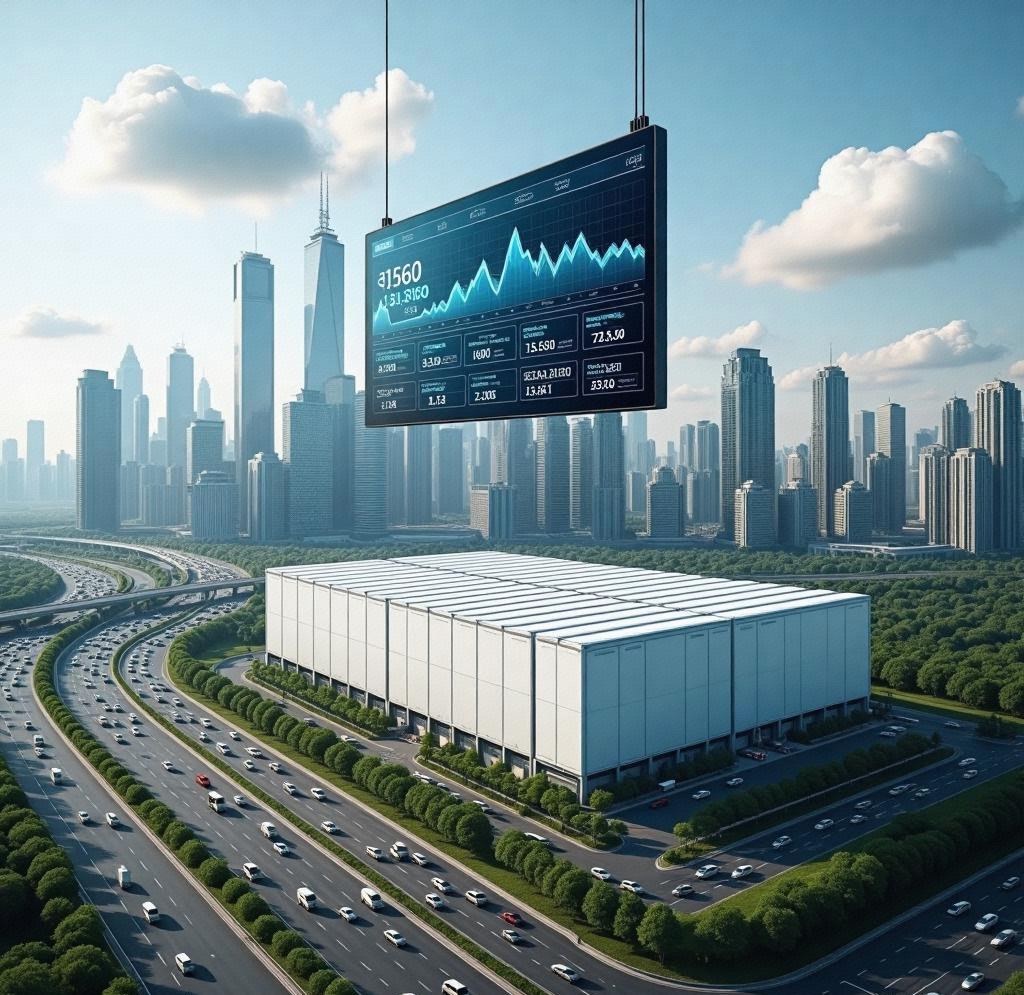Table of Contents
Overview of the Energy Storage Battery Industry
The energy storage battery industry is rapidly growing, driven by renewable energy demand, innovative technologies, and global decarbonization goals. Market players are investing in efficiency, safety, and scalability to meet evolving needs.

Recent Innovations in Energy Storage Battery Technologies
The energy storage battery sector is undergoing dynamic transformation, fueled by cutting-edge innovations. Companies like Hicorenergy are at the forefront, introducing residential and commercial battery solutions with advanced features such as remote monitoring, smart control systems, and superior energy density. Their I-BOX 48100R stands out with a 10-year warranty, compatibility with leading inverters, and over 6000 lifecycle counts at 90% DOD. The C5° system incorporates intelligent thermal management and real-time upgrading, boosting reliability and performance. Si LV1, another standout, delivers powerful surge output and plug-and-play installation, suitable even for limited spaces. In commercial and industrial domains, systems like Si Station 186 and 230 utilize modular integration, IP54 ratings, and grid compliance for flexible deployments across factories, power stations, and large infrastructure. These developments signal a clear industry shift towards user-centered design, long lifespan, and seamless scalability.
Impact of Renewable Energy on the Energy Storage Battery Market
Renewable energy’s rise has accelerated the demand for energy storage batteries. Solar and wind sources require reliable storage to balance intermittent generation. As global energy systems transition, the need for stable, efficient, and adaptable battery technologies continues to grow, ensuring long-term market expansion.
Key Players in the Energy Storage Battery Industry
The energy storage battery landscape is dominated by a mix of multinational corporations, regional leaders, and innovative newcomers. Major players include Tesla, BYD, LG Energy Solution, Samsung SDI, CATL, Panasonic, and Fluence Energy. These firms shape industry direction through R&D, strategic partnerships, and large-scale deployments.
However, emerging companies like Hicorenergy are challenging the dominance of legacy brands by offering cost-effective, high-performance battery systems tailored to global market demands. With production facilities in China and branches in the USA, Netherlands, and Vietnam, Hicorenergy brings flexibility and fast response to both B2C and B2B segments. Their local warehousing and technical service teams across continents significantly reduce delivery timelines and enhance customer support.
In the residential segment, Tesla’s Powerwall and LG’s RESU are benchmark products. Still, Hicorenergy’s I-BOX 48100R provides a competitive alternative—boasting LiFePO4 cells, self-developed BMS with dual MCU protection, and compatibility with virtually all inverter brands. Its compact, stackable design also enables easy installation in diverse household settings.
For commercial and industrial applications, Fluence and BYD offer robust systems, but Hicorenergy’s Si Station 186 and Si Station 230 bring modular flexibility and compliance with international standards. The systems are grid-tied and off-grid ready, with optional PV input and backup modules, making them suitable for microgrid, factory, and grid-scale deployments.
Overall, the key to thriving in this space lies in balancing price sensitivity with high-quality performance—something Hicorenergy strategically delivers, especially in emerging markets like Africa and Southeast Asia. Their agile product development, real-time monitoring capabilities, and rapid local support give them a unique competitive edge.
Government Policies and Regulations Affecting Energy Storage

Government support plays a pivotal role in the energy storage battery industry’s growth. Across the globe, regulations, incentives, and policy frameworks are evolving to encourage battery adoption in both residential and commercial sectors.
In the United States, policies like the Inflation Reduction Act (IRA) provide tax incentives for battery installations, driving residential and utility-scale demand. Europe’s Green Deal and the EU Battery Regulation promote sustainable battery manufacturing and recycling, placing environmental compliance at the forefront. In Asia, China’s 14th Five-Year Plan emphasizes the development of energy storage systems, with policies supporting innovation, export, and domestic installation.
Developing countries are also formulating energy strategies to reduce grid dependency and integrate renewables. African nations such as Nigeria and Kenya face frequent power outages, which has led to increased adoption of backup energy storage batteries. However, inconsistent regulation and weak infrastructure remain major barriers.
For businesses like Hicorenergy, navigating these regulations requires agility and international compliance. Their products meet global safety standards, and several models (e.g., Si LV1 and SHV48100) are UL9540A tested and IP55/IP54 rated for durability and safe deployment in diverse environments. Their presence in various regulatory regions, combined with localized support teams, positions Hicorenergy well to adapt to policy shifts.
As governments push for carbon neutrality and grid modernization, manufacturers must remain compliant while innovating for efficiency and sustainability. This dual focus ensures not only market entry but also long-term viability and trust among end-users.
Market Growth and Investment Trends in Energy Storage Batteries
The global energy storage battery market is experiencing exponential growth, driven by rising electricity demand, grid instability, and the global push toward renewable energy. According to market research, the sector is projected to surpass $200 billion by 2030, with a CAGR exceeding 20% over the next five years.
Investments are pouring into R&D, infrastructure, and manufacturing scale-ups. Large players like CATL and Tesla are investing billions in new gigafactories, while governments and private equity firms are supporting early-stage innovators. Energy storage is no longer viewed as a supplemental asset; it is now a critical infrastructure component.
Emerging markets in Africa, Southeast Asia, and Latin America are witnessing accelerated adoption due to frequent grid failures and growing solar uptake. Distributors like Nigeria’s Scott Campbell look to Chinese suppliers like Hicorenergy for reliable and affordable energy storage battery systems that meet technical, logistical, and regulatory requirements. Hicorenergy’s ability to maintain stable supply, offer product customization, and provide local delivery makes them a go-to partner for high-growth regions.
Moreover, the rise of residential solar installations and electric vehicle (EV) integration has broadened market scope. Modular, scalable solutions such as Hicorenergy’s C5° and Si LV1 enable homeowners and businesses to expand energy capacity with minimal upfront cost and installation complexity.
As energy storage becomes more mainstream, companies investing in flexibility, sustainability, and user-centric designs are set to dominate. Hicorenergy’s strategic positioning, combined with deep industry experience and technical excellence, ensures it remains a key contributor to global market growth.
Challenges Facing the Energy Storage Battery Industry
Despite its rapid growth, the energy storage battery sector faces significant challenges that could hinder widespread adoption. These include raw material shortages, high upfront costs, safety concerns, regulatory fragmentation, and supply chain disruptions.
Lithium, cobalt, and nickel—key components in most batteries—are subject to price volatility and geopolitical risks. This affects production costs and product pricing. Manufacturers like Hicorenergy address this challenge by using LiFePO4 (LFP) chemistry, which is more stable, affordable, and safer, while offering long lifecycle performance.
Another issue is installation and technical complexity, especially in regions with limited expertise. To mitigate this, Hicorenergy develops plug-and-play systems like the Si LV1, which simplifies installation and reduces service calls. The inclusion of smart monitoring platforms also allows remote diagnostics and updates, ensuring reduced maintenance overhead.
Certification and compliance remain challenging, especially when exporting to multiple regions. Hicorenergy’s adherence to global safety standards and the inclusion of UL and CE certifications help streamline approval processes and build client confidence.
Finally, logistical and after-sales challenges are particularly prominent in emerging markets. Hicorenergy overcomes this through local warehousing, regional service teams, and a scalable distribution network, ensuring faster response times and customer satisfaction.
The industry’s future hinges on companies’ ability to innovate while addressing these critical issues. Hicorenergy’s proactive approach to problem-solving, combined with a deep understanding of customer pain points, sets them apart as a resilient and reliable partner.

Future Outlook and Emerging Trends in Energy Storage Batteries
The energy storage battery industry is set to play a defining role in the global energy transition. Future trends indicate a move towards AI-powered smart grids, second-life battery applications, hybrid systems integrating solar and EVs, and enhanced safety protocols.
Decentralization of energy systems and the rise of virtual power plants (VPPs) will require batteries that are smart, modular, and grid-ready. Hicorenergy’s product lineup aligns perfectly with this trajectory. Their C5° system offers real-time monitoring, wide temperature adaptability, and high cycle life. The SHV48100 is ideal for distributed energy storage in commercial buildings and charging stations, while the scalable Si Station series supports large-scale industrial and grid applications.
Scalability and integration are key. With systems expandable up to 491.52kWh and support for remote upgrades, Hicorenergy products are built to grow with customer needs. Their comprehensive ecosystem—from residential (I-BOX 48100R, Si LV1) to commercial and industrial (SHV48100, Si Station)—provides a flexible pathway for future expansion.
As policies align with carbon neutrality, and the demand for electrification increases, Hicorenergy’s forward-thinking designs and global strategy ensure it remains a leader in shaping the future of energy storage.
Summary
Hicorenergy offers innovative and scalable energy storage battery solutions with long life, smart monitoring, and robust safety, catering to both residential and industrial markets worldwide.
Contact Us
Email: service@hicorenergy.com
WhatsApp: +86 181-0666-0961
-scaled.png)
